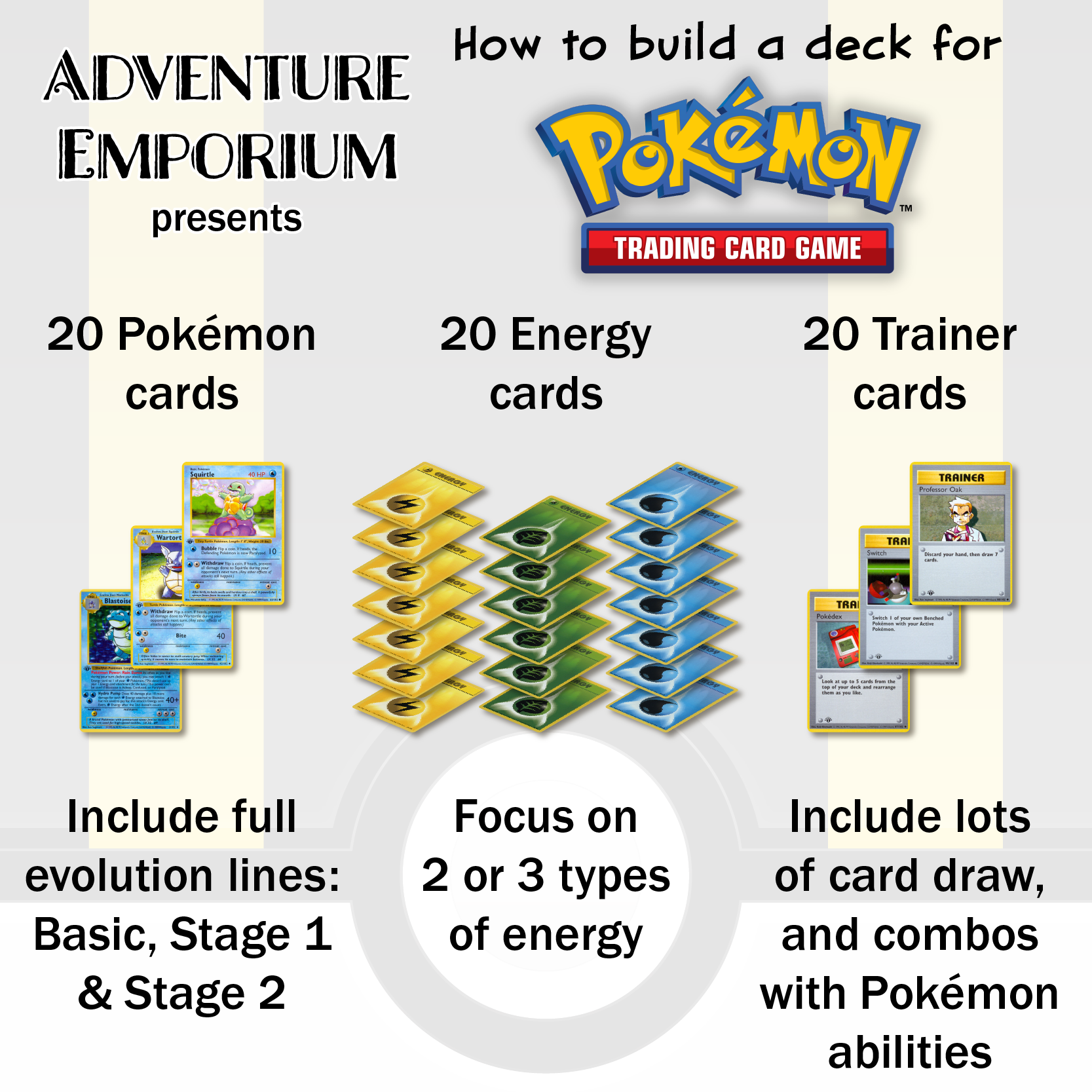While building your own deck is a big part of TCG fun, it can be a little mystifying to some people. It’s easy to jam a pile of your favorite cards together, but is that good strategy? Will that help you win games with your favorite cards? What goes into an effective deck? This can be tricky in the Pokémon TCG, too. When you’re sending your favorite Pokémon into a duel, you wanna make sure they survive. Fortunately, for the Pokémon TCG, it’s actually really easy to build a decent deck. Here’s how to make a Pokémon deck for those unsure of where to start.

Choosing Your Pokemon
Pokémon types
For most casual play, considering the resistances and weaknesses of your Pokémon is important. Unless you’re aiming for a specific deck strategy, you want to diversify the types of Pokémon in your deck. You want to choose multiple types of Pokemon with differing weaknesses and resistances so that your deck is more versatile to the threats of your opponents. Using just one type will make your deck very vulnerable to many opponents who are able to prey upon a singular weakness. However, using too many types will make your deck inconsistent, and it’ll be difficult to get the energies or evolutions you need to win the game. The rule of thumb is to focus on 2 or 3 types of Pokémon in your deck with a central strategy at heart.
Pokémon cards
In addition to sticking to your chosen 2 or 3 types, there’s one other thing to keep in mind. Using full or partial evolution chains is a good deckbuilding tactic. Of course, you’ll need to include the Basic Pokémon for the Stage 1 and Stage 2 Pokémon you want to run. Likewise, include the Stage 1 and Stage 2 evolutions of the Basic Pokémon you want to run. Sometimes Basic Pokémon will have good attacks and abilities without evolving. However, evolving gives your Pokémon a quick boost to the HP to keep that prize card out of your opponent’s hands.
Constructing the Rest of Your Deck
Energy cards
The Pokémon types in your deck determine which energies to put in your deck, naturally. Decks run well with about 20 to 22 energy cards. This means, if you want to keep things simple, just include 6 to 10 of each energy type your Pokémon need. To fine tune your energy cards, count how many energy symbols of each type appear on your Pokémon cards. Divide that by the total number of non-colorless symbols, and use that ratio to adjust the number of energy cards of that type.
Trainer cards
Unlike many other card games, Pokémon provides a lot of easy-to-play card draw abilities. This evens out your deck’s performance, increasing your access to cards you need when you need them. Trainer cards are the key to running a consistent deck that gives proper access to the resources needed to win. It’s a good idea to run 6 to 10 Trainer cards that draw more cards for you. Trainer cards also give you the opportunity to synergize and combo effects with your Pokémon attacks and abilities, letting you get more done on your turn than your opponent. Or, instead of sly synergy cards, some styles of decks want defensive Trainer cards that keep your Pokémon alive longer and keep your opponent from earning their prize cards.
Netdecking
Lastly, there’s the topic of "netdecking," and the controversy that can come with it.
Netdecking is basically finding deck lists that other players post online, and using them to construct your deck. Some players consider this cheating - a perspective that views deckbuilding as a personal and creative experience. However it’s not against the rules, and netdecking can be a boon to players who want to explore advanced strategies or don’t have time to test and fine tune their own deck-build. Netdecking can also be a strategy for tournament players who are looking to win first and foremost.
While the decision to netdeck is a personal one, it’s generally frowned upon when used to dominate casual games mercilessly. There are many ways to have fun with the Pokémon TCG, but never good form to take away from someone else’s fun. If you are new to the game and want to improve upon your deck without copying another deck exactly, its an acceptable thing to look at what cards are performing well and figuring out if there are ways you can make your list operate in a similar, streamlined manner.
Either way, the thing that sets the Pokémon Trading Card Game apart from other trading card games is the focus on fun first. So, always build with the mindset of what would be most fun for you!

